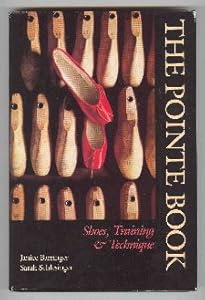Recently I discovered that my university’s library has a small collection of dance-related books. I first went searching for them when I wanted to read Conditioning for Dance. Unfortunately, at the time, despite the library listing the book as being there, I couldn’t find it. I did however find Conditioning for Dancers. I haven’t read much of it (I’ve got some serious course reading to do now that my last semester of college has started and I’m enrolled in a Popular Fiction course–hello a novel a week). It looks really useful though, and it has some useful stretching techniques I’ve spotted as I flipped through the book. I also grabbed Dance Analysis: Theory and Practice, since I figured it might provide some helpful insight for writing critiques of dance performances.
When I read this article over at 4Dancers about The Pointe Book, I had to check to see if it was at my library. The books contains almost everything you’d want to know about pointe shoes, from their history, how to get fitted for pointe shoes, how to sew ribbons and elastic and care for them, how to teach pointe, information about pointe related injuries and treatment, and perhaps one of my favorite features of the book, sample pointe classes ranging from the first day pointe class from the American School of Ballet to adult pointe level
classes.
I also picked up Ballet 101, a complete guide to learning and loving ballet (which I haven’t read any of) because my knowledge of actual ballets is kind of lacking. I want to pick up a copy of The Ballet Companion as well; it looks like it could be a good resource.
Have you read any dance books? Which ones would you recommend?



 Merry Christmas/Happy Holidays from Adult Ballerina Project!
Merry Christmas/Happy Holidays from Adult Ballerina Project!
